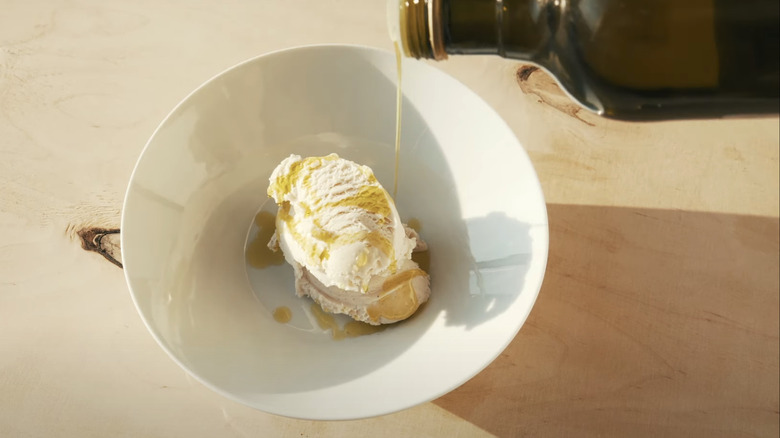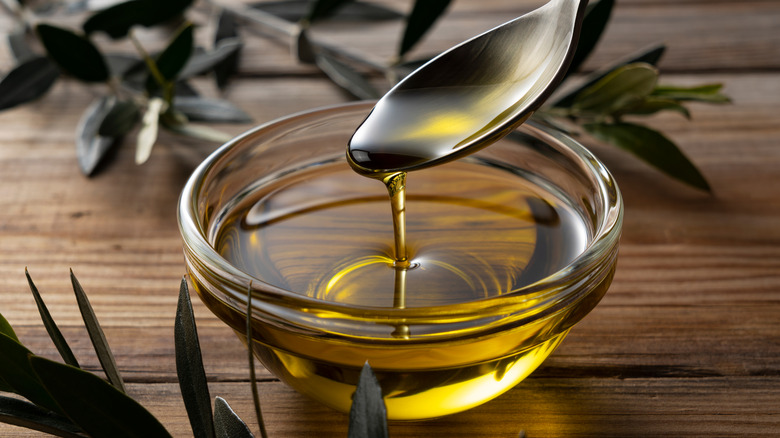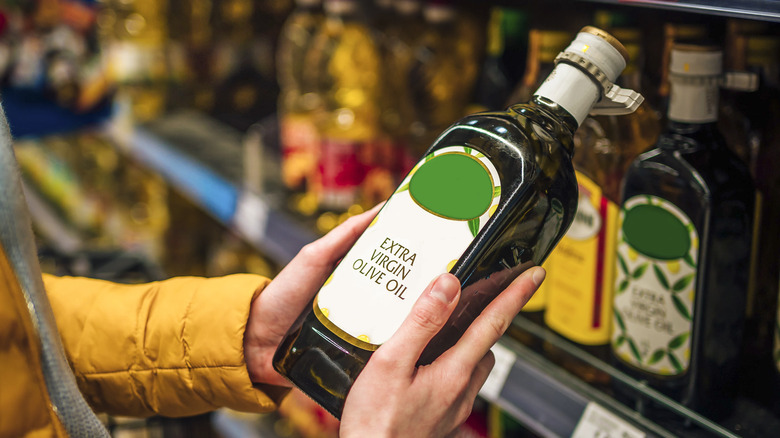Deck Out Your Desserts With A Savory Drizzle Of Olive Oil
Olive oil is not uncommon as a dessert ingredient — especially when it comes to melt-in-your-mouth fluffy cakes like Meyer lemon and olive oil cake or a dense and decadent chocolate olive oil cake. Olive oil is frequently used as a vegan alternative to butter, but have you ever tried drizzling it on top of your desserts? However unconventional it might sound at first, give it a try, and you'll be pleasantly surprised.
Whether or not the dessert already contains olive oil, you'll find that adding a little on top of just about any sweet treat — from vanilla soft serve to brownies to a citrusy cake — will improve its overall flavor and texture. Olive oil might seem discordantly savory but, in this context, it acts like salt as a flavor enhancer, amplifying the sweet tastes of the ingredients in the dessert while also adding complexity thanks to its own array of flavors.
Why olive oil belongs on your dessert
Olive oil is a natural, nutritious source of fat. Drizzling olive oil on your dessert is like pouring milk in your coffee or slathering butter on your bread: It creates a rich, creamy coating on your tongue and carries with it the flavors and aromas of the other ingredients with which it interacts. Some of the molecules that determine the scent of a food are referred to as "volatile compounds" because they float through the air and reach your nose under certain conditions. Fats, such as olive oil, have an effect on volatile compounds that impacts our perception of taste before, during, and after consuming a bite of food, intensifying particular flavors like vanilla.
The fat molecules in olive oil also stretch out the tasting experience, causing the flavors to linger in your mouth for longer. Pour a few drops of olive oil on a vanilla bean-flecked panna cotta, for example, and you'll find every spoonful all the more intensely delicious and satisfying.
Pairing olive oil with your dessert
When choosing an olive oil to drizzle onto your dessert, keep in mind that they're not all the same. The taste of your olive oil depends on the variety of olive, where it was grown, and when it was harvested. There are over a thousand varieties of olives in the world, and each one has its own distinct characteristics, which means some olive oils may pair better with your dessert than others.
You can read the labels on olive oil bottles to find tasting notes. Most olive oils can be described as fruity, grassy, buttery, peppery, or nutty. Any of these can make an interesting pair with dessert, but some will have spicy, savory, or herbaceous notes that are more noticeable than others. If you're looking for a mild option that will boost the flavors of your dessert without standing out too much, look for an olive oil described as fruity or buttery.



